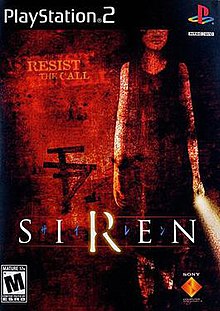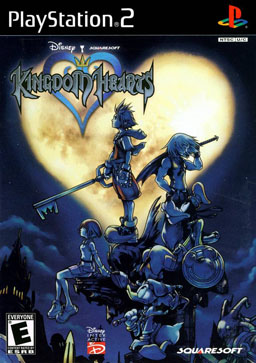
Kingdom Hearts is a 2002 action role-playing video game developed by Square for the PlayStation 2 video game console. It is the first game in the Kingdom Hearts series and is the result of a collaboration between Square and The Walt Disney Company. An expanded re-release of the game featuring new and additional content, Kingdom Hearts Final Mix, was released exclusively in Japan in December 2002. The Final Mix version of the game was later remastered in high definition and released globally as a part of the Kingdom Hearts HD 1.5 Remix collection for the PlayStation 3. The game was later ported and released as part of the bundled Kingdom Hearts HD 1.5 + 2.5 Remix collection for PlayStation 4 in March 2017, Xbox One in February 2020, Windows in March 2021, and Nintendo Switch in February 2022.

Sonic Heroes is a 2003 platform game developed by Sonic Team USA and published by Sega as part of the Sonic the Hedgehog series. The player races a team of series characters through levels to amass rings, defeat robots, and collect the seven Chaos Emeralds needed to defeat Doctor Eggman. Within each level, the player switches between the team's three characters, who each have unique abilities, to overcome obstacles. Sonic Heroes abandons the action-adventure and exploration-based gameplay of its predecessors Sonic Adventure (1998) and Sonic Adventure 2 (2001) and instead returns to the linear style of Sega Genesis-era Sonic games.

Dynasty Warriors is a series of Japanese hack and slash action video games created by Omega Force and Koei. The series is a spin-off of Koei's turn-based strategy Romance of the Three Kingdoms series, based upon the Chinese novel of the same name, which is a romanticised retelling of the Chinese Three Kingdoms period.

Dark Chronicle, released as Dark Cloud 2 in North America, is a 2002 action role-playing game developed by Level-5 and published by Sony Computer Entertainment for the PlayStation 2 (PS2). It was released in Japan before releasing in English in 2003. An emulated version of the game was released for the PlayStation 4 through the PlayStation Network in 2016.

Maximo: Ghosts to Glory, known in Japan, Korea, Europe and Australia as Maximo, is a 3D hack and slash platform video game developed by Capcom for the PlayStation 2. The game is based on the Ghosts 'n Goblins universe and features original character designs by Japanese illustrator Susumu Matsushita. The game was followed by a sequel, Maximo vs. Army of Zin in 2003.

Shadow Hearts: Covenant is a role-playing video game developed by Nautilus (Sacnoth) for the PlayStation 2, and is the second entry in the Shadow Hearts series. Published in Japan by Aruze in 2004, the game was released internationally by Midway Games in 2004 and 2005 (Europe). A director's cut with additional content was released in Japan in 2005.

Resident Evil Outbreak: File #2 is a survival horror video game developed and published by Capcom with online playability for the PlayStation 2. It is the sequel to Resident Evil Outbreak, and the final installment of the spin-off series. It released on September 9, 2004 in Japan, on April 26, 2005 in North America, and August 26, 2005 in PAL regions.
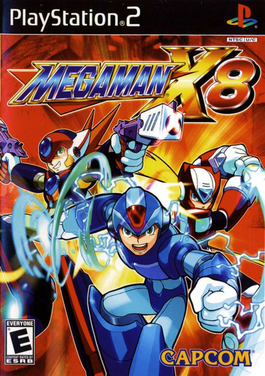
Mega Man X8, known as Rockman X8 (ロックマンX8) in Japan, is a video game developed by Capcom for the PlayStation 2. It is the eighth game in the Mega Man X series. It was first released in North America on December 7, 2004. The PS2 version, as well as a Windows iteration, were released in Japan and Europe the following year. On December 16, 2015, it was released on PlayStation Network in Japan. It was released for Nintendo Switch, PlayStation 4, Windows, and Xbox One in July 24, 2018 worldwide and July 26, 2018 in Japan as a part of Mega Man X Legacy Collection 2.

Samurai Warriors is the first title in the series of hack and slash video games created by Koei's Omega Force team based closely around the Sengoku period of Japanese history and it is a sister series of the Dynasty Warriors series, released for the PlayStation 2 and Xbox in 2004. A port of this game called Samurai Warriors: State of War has been released for the PlayStation Portable, which includes additional multiplayer features.

Phantasy Star Universe (PSU) is an action role-playing video game developed by Sega's Sonic Team for the Microsoft Windows, PlayStation 2 and Xbox 360 platforms. It was released in Japan for the PC and PlayStation 2 on August 31, 2006; the Xbox 360 version was released there on December 14, 2006. Its North American release was in October 2006, in all formats. The European release date was November 24 the same year, while the Australian release date was November 30.
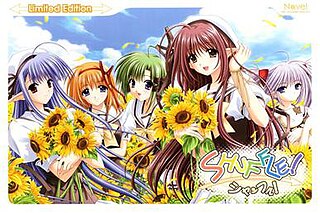
Shuffle! is a Japanese visual novel developed by Navel. It was originally released as an adult game for Windows on January 30, 2004. It was subsequently followed by an all-ages release for the PlayStation 2 (PS2) and an expanded adult release for Windows. The Windows version was localized in English by MangaGamer in 2009, and the PS2 version was localized in English by YumeHaven in 2016 on Steam. The gameplay in Shuffle! follows a branching plot line that offers pre-determined scenarios and courses of interaction and focuses on the appeal of the female main characters. Shuffle! has been re-made into an expanded version called Shuffle! Essence+. It has expanded routes for the original five main heroines and new routes for six other characters. Shuffle! also has three spin-off sequels: Tick! Tack!, Really? Really! and Shuffle! Love Rainbow.

Obscure is a survival horror video game developed by Hydravision Entertainment and published by DreamCatcher Interactive in North America, Ubisoft in China and MC2-Microïds in other territories for Microsoft Windows, PlayStation 2 and Xbox. It was released on October 1, 2004 in Europe and on April 6, 2005 in North America.

One Piece: Grand Battle is a fighting game made in Japan based on the anime and manga series One Piece. It is the fourth and final game in One Piece's Grand Battle series and the nineteenth One Piece video game released. The game was released in Japan as One Piece: Grand Battle! Rush. The English version uses the intro from the TV series.

Tomoyo After: It's a Wonderful Life is a Japanese adult visual novel developed by Key released on November 25, 2005 for Windows PCs. The game is a spin-off of Key's earlier all ages game Clannad. Key later released versions of Tomoyo After without the erotic content, and the game was ported to the PlayStation 2, PlayStation Portable, Xbox 360, PlayStation 3 and Nintendo Switch under the title Tomoyo After: It's a Wonderful Life CS Edition; CS stands for "consumer software". The story follows the lives of Tomoya Okazaki, a young man who recently graduated from high school, and his close friend Tomoyo Sakagami as they start to see more of each other in a romantic relationship.

Forbidden Siren 2 is a 2006 survival horror stealth game developed by Japan Studio's Project Siren team and published by Sony Computer Entertainment for the PlayStation 2 in 2006. It is a sequel to 2003's Siren. A film inspired by the game but featuring a different plot and characters, Siren, was released that same year.
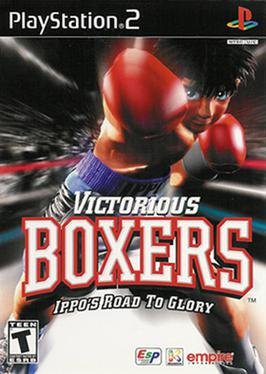
Victorious Boxers: Ippo's Road to Glory, known as simply Victorious Boxers, is a boxing video game developed by New Corporation for the PlayStation 2 video game console. It is based on the Hajime no Ippo franchise. The game was released in Japan by Entertainment Software Publishing in December 2000 and in North America and Europe by Empire Interactive in 2001.

Dragon Ball Z: Budokai Tenkaichi, released in Japan as Dragon Ball Z: Sparking!, is a series of fighting games developed by Spike based on the Dragon Ball manga series by Akira Toriyama. The series was published by Namco Bandai Games in Japan and Europe, and by Atari in North America and Australia until 2008. Since Budokai Tenkaichi 3, Bandai Namco has handled Dragon Ball game publishing in all regions, effectively ending Atari's involvement.

Baroque is a roguelike role-playing video game developed by Sting Entertainment. It was originally released for the Sega Saturn in 1998 by Entertainment Software Publishing, then ported to the PlayStation the following year. A remake for PlayStation 2 and Wii was released in Japan by Sting Entertainment in 2007, and later overseas in 2008 from Atlus USA and Rising Star Games (Europe). This version was later released on iOS in 2012, and an enhanced port of the original version on Nintendo Switch in 2020.

Siren: Blood Curse is a survival horror stealth game developed by Project Siren, a development team of Japan Studio, and published by Sony Computer Entertainment for the PlayStation 3. The third and final installment in the Siren series, Blood Curse was released in July 2008 in Japan and on the PlayStation Store in North America and PAL regions. It was released in October 2008 in Australia and Europe and in December on the PlayStation Store in Japan.

Spirit Hunter: Death Mark II is a horror visual novel adventure game developed and published by Experience. It is the third entry in the Spirit Hunter series, following 2017's Spirit Hunter: Death Mark and 2018's Spirit Hunter: NG. The game was released for Nintendo Switch and PlayStation 4 on December 1, 2022 in Japan, and is planned to be released by Aksys Games for Nintendo Switch, PlayStation 5 and Windows on February 15, 2024 worldwide.
